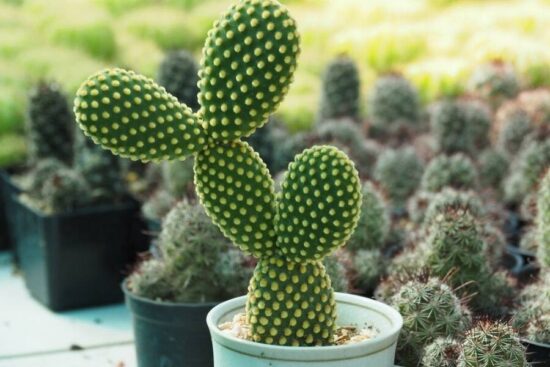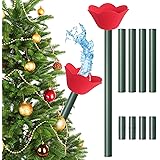Do cacti produce oxygen? The answer is a resounding yes! These spiky desert dwellers not only survive in harsh conditions but also play a crucial role in our ecosystem by releasing oxygen into the air. Cacti, with their unique ability to convert carbon dioxide into oxygen through photosynthesis, are true unsung heroes of the plant world.
So, the next time you marvel at a cactus, remember that it’s not only a prickly beauty but also a silent oxygen producer. Let’s delve deeper into the fascinating world of cacti and their oxygen-producing abilities.
Do Cacti Produce Oxygen?
Cacti are fascinating plants that have adapted to survive in some of the harshest environments on Earth. They are known for their ability to store water, their striking shapes, and their ability to thrive in arid conditions. But what about their role in producing oxygen? Do cacti actually contribute to the oxygen levels in our atmosphere?
In this article, we will explore the science behind cacti and oxygen production to provide a comprehensive answer to this question.
Understanding Oxygen Production in Plants
Before delving into the specifics of cacti and their oxygen-producing capabilities, it is important to have a basic understanding of how plants in general produce oxygen.
Through a process called photosynthesis, plants use sunlight, water, and carbon dioxide to produce energy and release oxygen as a byproduct. This vital process occurs in specialized cell structures called chloroplasts, which are found in plant leaves.
During photosynthesis, plants absorb sunlight through pigments called chlorophyll. The energy from sunlight is used to convert water and carbon dioxide into glucose (a type of sugar) and oxygen. The glucose is then utilized by the plant as an energy source while the oxygen is released into the air.
The Role of Cacti in Oxygen Production
Cacti, like other plants, possess chloroplasts and have the ability to photosynthesize. Therefore, it is safe to say that cacti do produce oxygen as a byproduct of photosynthesis.
However, the amount of oxygen produced by a cactus may not be as significant as that produced by larger, leafier plants due to their unique adaptations to dry environments.
One of the key adaptations of cacti is their reduced leaf surface area, which helps to minimize water loss through evaporation. Instead of having large, broad leaves like many other plants, cacti have evolved to have modified leaves called spines.
These spines serve multiple purposes, including protecting the cactus from herbivores and reducing water loss.
The reduced leaf surface area means that cacti have fewer chloroplasts available for photosynthesis compared to plants with larger leaves. As a result, cacti may produce less oxygen per plant compared to other types of plants.
However, it is important to remember that cacti are highly efficient at water conservation, which allows them to survive in arid regions where other plants would struggle.
The Oxygen Production Potential of Different Cacti Species
While cacti, in general, produce oxygen, it is worth mentioning that the oxygen production potential may vary among different cactus species. Some cacti species may have larger leaf surface areas or a higher density of chloroplasts, leading to a higher oxygen production capacity.
However, extensive research specifically focusing on the oxygen production of different cacti species is limited.
It is also important to note that the overall contribution of cacti to the oxygen levels in the atmosphere is relatively small compared to other oxygen-producing organisms, such as trees and algae.
Nonetheless, every little bit counts, and cacti still play a role in maintaining a healthy balance of oxygen in our environment, especially in regions where they are abundant.
The Importance of Oxygen in the Environment
Oxygen is an essential component of the Earth’s atmosphere and is vital for supporting life as we know it. Humans and other animals require oxygen for respiration, and oxygen is also crucial for the process of aerobic cellular respiration, which generates energy within cells.
Additionally, oxygen plays a critical role in the Earth’s carbon cycle and helps to regulate the concentrations of other gases in the atmosphere.
While cacti may not produce as much oxygen as other plants, they still contribute to the overall oxygen levels in their respective ecosystems.
Their ability to survive in challenging environments and provide oxygen is just one of the many reasons why cacti are valued and admired by plant enthusiasts worldwide.
In conclusion, cacti do produce oxygen through the process of photosynthesis, although their oxygen production potential may be lower compared to other plants.
Their unique adaptations to arid environments, such as reduced leaf surface area and water conservation mechanisms, allow them to survive in harsh conditions.
While the contribution of cacti to the overall oxygen levels in the atmosphere may not be as significant as that of other oxygen-producing organisms, they still play a valuable role in maintaining a healthy balance in their respective ecosystems.
So, the next time you come across a cactus, remember that it not only adds beauty to its surroundings but also contributes to the oxygen we breathe.
Frequently Asked Questions (FAQs)
Yes, cacti do produce oxygen as part of their photosynthesis process. During photosynthesis, plants utilize sunlight, carbon dioxide, and water to produce glucose (their food) and oxygen as a byproduct.
While cacti do produce oxygen, it is important to note that their oxygen production levels are similar to most other plants. The efficiency of oxygen production is primarily determined by the plant’s size and the rate of photosynthesis.
Yes, cacti can help improve air quality in indoor spaces to some extent. Like other plants, they absorb carbon dioxide and release oxygen during photosynthesis. However, their impact may be relatively small compared to larger plants due to their smaller size.
No, during the night, cacti, like most plants, switch their process to respiration rather than photosynthesis. This means they consume oxygen and release carbon dioxide, similar to humans and other animals.
While cacti do produce oxygen, their overall impact may be limited in closed environments with low ventilation. Other factors such as the number of plants, their size, and the space available need to be considered for effective oxygen production.
Yes, apart from oxygen production, cacti offer several other benefits in indoor environments. They can help humidify the air, reduce dust levels, and add aesthetic appeal to the space.
Yes, like other plants, cacti require sufficient sunlight to carry out photosynthesis and produce oxygen. However, different species of cacti have varying light requirements, so it is important to provide adequate light conditions based on the specific needs of the cactus.
While cacti are adapted to survive in arid environments with low water availability, they still require adequate oxygen levels for respiration. Extremely low oxygen levels can negatively affect their growth and overall health.
Final Thoughts
Cacti, like other plants, undergo photosynthesis, a process that involves the absorption of carbon dioxide and the release of oxygen. Therefore, it can be concluded that cacti do produce oxygen. This is particularly beneficial as it helps to improve air quality and create a more conducive environment for humans and animals.
Additionally, the production of oxygen by cacti contributes to the overall balance of oxygen levels in our atmosphere. So, if you are looking for a natural way to enhance the oxygen content in your surroundings, consider having cacti around. They not only add beauty to your space but also contribute to a healthier atmosphere.
Auto Amazon Links: No products found.
Perfect Plants Christmas Tree Saver 8oz. | Easy Use Xmas Tree Preserver Food | Have Healthy Green Christmas Trees All Holiday Season
$9.97 (as of December 13, 2025 05:07 GMT +00:00 - More info- Product prices and availability are accurate as of the date/time indicated and are subject to change. Any price and availability information displayed on [relevant Amazon Site(s), as applicable] at the time of purchase will apply to the purchase of this product.
Rocky Mountain Goods Christmas Tree Food - 8 oz Tree Preservative - Reduce Needle Drop - Greener Scent - Fir, Pine, Spruce Trees - Extend Tree Life
$9.95 (as of December 13, 2025 05:07 GMT +00:00 - More info- Product prices and availability are accurate as of the date/time indicated and are subject to change. Any price and availability information displayed on [relevant Amazon Site(s), as applicable] at the time of purchase will apply to the purchase of this product.
FirEver Pure Christmas Tree Food | Preserver Additive & Season Extender for Live Xmas Trees | Keep It Green, Reduce Needle-Drop | Miracle Freshness (8 oz)
$14.99 (as of December 13, 2025 05:07 GMT +00:00 - More info- Product prices and availability are accurate as of the date/time indicated and are subject to change. Any price and availability information displayed on [relevant Amazon Site(s), as applicable] at the time of purchase will apply to the purchase of this product.
VICAMB 39.3 Inch Christmas Tree Watering Funnel,Christmas Tree Watering System Device,Long Tree Watering Funnel Spout for Indoor Outdoor Xmas Tree
$16.99 (as of December 13, 2025 05:07 GMT +00:00 - More info- Product prices and availability are accurate as of the date/time indicated and are subject to change. Any price and availability information displayed on [relevant Amazon Site(s), as applicable] at the time of purchase will apply to the purchase of this product.
EZMeetU Christmas Tree Watering Funnel, 47 Inch Flower Shape Adjustable 6 Section Design, Christmas Tree Watering System, Christmas Tree Waterer, Long Funnel Wide Opening Reusable, Plant Watering Tool
$16.99 (as of December 13, 2025 05:07 GMT +00:00 - More info- Product prices and availability are accurate as of the date/time indicated and are subject to change. Any price and availability information displayed on [relevant Amazon Site(s), as applicable] at the time of purchase will apply to the purchase of this product.
Snow Joe Premium Enviro Blend Ice Melt, Green-Coated Deicer Crystals, 50 lb - Safer Melter for Vegetation, Concrete & Metals w/ Anti-Corrosion Calcium Magnesium Acetate
$32.97 (as of December 12, 2025 19:27 GMT +00:00 - More info- Product prices and availability are accurate as of the date/time indicated and are subject to change. Any price and availability information displayed on [relevant Amazon Site(s), as applicable] at the time of purchase will apply to the purchase of this product.
Muddy Mat® Shown on TV Super Absorbent Microfiber Dog Door Mat for Muddy Paws, Non-Slip Washable Pet Rug, Quick Dry Chenille Entryway Carpet, Machine Washable Indoor Outdoor mat, Grey 30"x19"
$24.95 (as of December 12, 2025 19:27 GMT +00:00 - More info- Product prices and availability are accurate as of the date/time indicated and are subject to change. Any price and availability information displayed on [relevant Amazon Site(s), as applicable] at the time of purchase will apply to the purchase of this product.
ivtivfu Rolling Grill Basket, Removable Wooden Handle, 304 Stainless Steel, Nesting BBQ Tools, Smoker Grilling Accessories for Vegetable, Outdoor Cooking Camping, Birthday Gifts for Men Dad Husband
$25.99 (as of December 12, 2025 19:27 GMT +00:00 - More info- Product prices and availability are accurate as of the date/time indicated and are subject to change. Any price and availability information displayed on [relevant Amazon Site(s), as applicable] at the time of purchase will apply to the purchase of this product.
XXXFLOWER Plant Terrarium with Wooden Stand, Air Planter Bulb Glass Vase Metal Swivel Holder Retro Tabletop for Hydroponics Home Garden Office Decoration - 3 Bulb Vase
$18.98 (as of December 12, 2025 19:27 GMT +00:00 - More info- Product prices and availability are accurate as of the date/time indicated and are subject to change. Any price and availability information displayed on [relevant Amazon Site(s), as applicable] at the time of purchase will apply to the purchase of this product.
Zevo Flying Insect Trap Official Refill Cartridges - Fits Both Zevo Trap & MAX Indoor Fly Trap - Authentic Trap+Lock Technology to Catch Gnats, House & Fruit Flys (4 Official Refill Cartridges)
$14.97 (as of December 12, 2025 19:27 GMT +00:00 - More info- Product prices and availability are accurate as of the date/time indicated and are subject to change. Any price and availability information displayed on [relevant Amazon Site(s), as applicable] at the time of purchase will apply to the purchase of this product.











